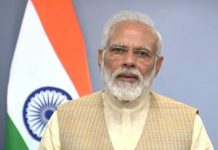
Think of a global smart city and most will come up with the obvious names – London, New York, Mexico City and Singapore (though the latter is a country). However, when the International Community Forum (ICF), a New York-based think tank, announced its 2015 list of seven finalists, it didn’t include the above-mentioned large urban conglomerates. Apart from Rio de Janeiro (Brazil), the others were smaller. Unknown ones like Columbus (US), Ipswich (Australia) and New Taipei City (Taiwan).
In November this year, when Venkaiah Naidu, the minister for urban development, selects the first list of 20 cities, out of 98, which will initially become ‘intelligent’, it may spring a few surprises. What if the initial list comprises names like Namchi (Sikkim) with a population of just over 12,000, Kavaratti (Lakshadweep) with just over 11,000 people, and Pasighat (Arunachal Pradesh) with a population of nearly 25,000? It will finally boil down to the ‘Smart City Plan’ that the selected consultants design and devise for the various shortlisted cities.
Herein lies the problem. In the hurry to implement the proposal, Naidu shortcircuited the process. The definition, vision and scope of a smart city was left vague as well as all-encompassing. The time required to achieve the objectives was squeezed to unreasonably short periods. As one of the consultancy firms, which refused to participate in the project, says, “The final outputs, in terms of city-specific blueprints and plans, may turn out to be a cut-and-paste job borrowed from global examples. There may be little or no innovations in it.”
NOT-SO-SMART VISION
To be fair to the government, it admitted that there was no “universally-accepted definition” of a smart city. On its website, www.smartcities.gov.in, it added that the concept would vary from city to city, country to country, and depend both on the policymakers and citizens. Clearly, a smart city in Europe or the US would be different from that in India; even in this country, different cities would require different plans. One-size-fits-all strategy cannot work. This is sheer common sense that stems from our own experiences of cities and towns.
Unfortunately, the urban development ministry insisted that the focus of its smart-cities vision was on “sustainable and inclusive development and the idea to look at compact areas and create a replicable model which will act like light house to other aspiring cities.” The ministry note added that the idea was to replicate the models even within the smart cities and catalyse the “creation of smart cities in various regions and parts of the country.” Clearly, there are inherent contradictions in the underlying philosophy of the overall plan.
The ministry has, in its ‘strategy’ document, included the concept of ‘pan-city development’. It envisages the “application of selected smart solutions to the existing city-wide infrastructure.” Pancity is an additional feature that needs to be a part of any proposal. The idea: “Since smart city is taking a compact area approach, it is necessary that all the city residents feel there is something in it for them also.” Thus, there has to be at least one, or ideally several, smart solutions to make the schemes seem ‘inclusive’.
Over the next few years, the idea of pan-city solution(s) may create several problems. One, in a bid to achieve the objective, the agencies that implement it may take a few shortcuts. It may lead to incomplete execution. Two, some of these agencies may resort to corrupt practices to cajole the municipal bodies to officially confirm that the solutions pan across the cities. Finally, the external planners may incorporate easy solutions in their plans, rather than think out-of-the-box.
SCOOP THE SCOPE
If one analyses the various government documents related to smart cities, one finds that scope of the work is both vague and all-encompassing. For example, its core infrastructure elements include adadequate water supply, assured electricity, efficient public transport, affordable housing, robust it connectivity, good egovernance, sustainable development and public safety. Municipal bodies cannot deliver such results. Even state governments cannot, unless there is an unheard of coordination between its various ministries and departments.
Among the specifics mentioned in the ‘essential features’ of any smart city plan are quantitative features for assured electricity supply, 10 percent of the energy requirements should be solar. Efficient public transport has to incorporate ‘encouragement to non-motorised transport’, like walking and cycling. In case of greenfield projects, as opposed to retrofit and redevelopment ones, 80 percent of the buildings have to be green and energy-efficient. These are mere figures that will obviously be twisted and tweaked by the implementing agencies.
Most of the global smart cities are more focused and have a single overriding target. In the case of Arlington Country (US), which featured in the ICF list of seven cities, the aim was to “reduce its vulnerability to Federal decision-making”, as explained in a Forbes article. Being close to the US capital, Washington, this city is home to the Pentagon and Defense Advanced Research Projects Agency. It designed ‘The Arlington Way’ strategy after the US Department of Defense decided to vacate 3.2 million square feet of land and export 13,000 jobs out of the city.
New Taipei City’s focus was mainly on broadband. In the past five years, the city increased the internet penetration rate to 91 percent, with most on 100 Mbps service. According to the Forbes article, it also “connected more than 300 schools, put tablets and computers into classrooms and has facilitated the installation of more than 10,000 wi-fi hotspots in convenient stores”. The broadband advances were joined with a ‘Knowledge-bridge’ project to drive collaborations between the industry and universities to improve skills and create jobs.
SMART CITY, STUPID PEOPLE
A consultant observes that “an inherent condition to make a city smart is to have smart citizens.” Minus the latter, what a smart-city plan will finally achieve is the creation of infrastructure that becomes redundant or inadequate within a short period of time. Past experiences in Delhi and Mumbai prove this conclusively. In the run-up to the Commonwealth Games, India’s capital constructed a string of infrastructure: the same flyovers, widened roads, subways and overhead bridges. All of them are either jampacked or under-used.
Therefore, what is needed along with smart cities is a communications strategy to make the citizens smart. Although nda-2 has launched nationwide ad campaigns for its schemes such as the Swachh Bharat Abhiyan and Selfies with Daughter, experts feel that they may not yield results. The reason: research has proved that what is required in India is a ‘participatory’ and ‘localised’ messaging to cater to the specific needs of the local communities. The same needs to be devised to make the locals understand the scope and canvas of a smart city.













